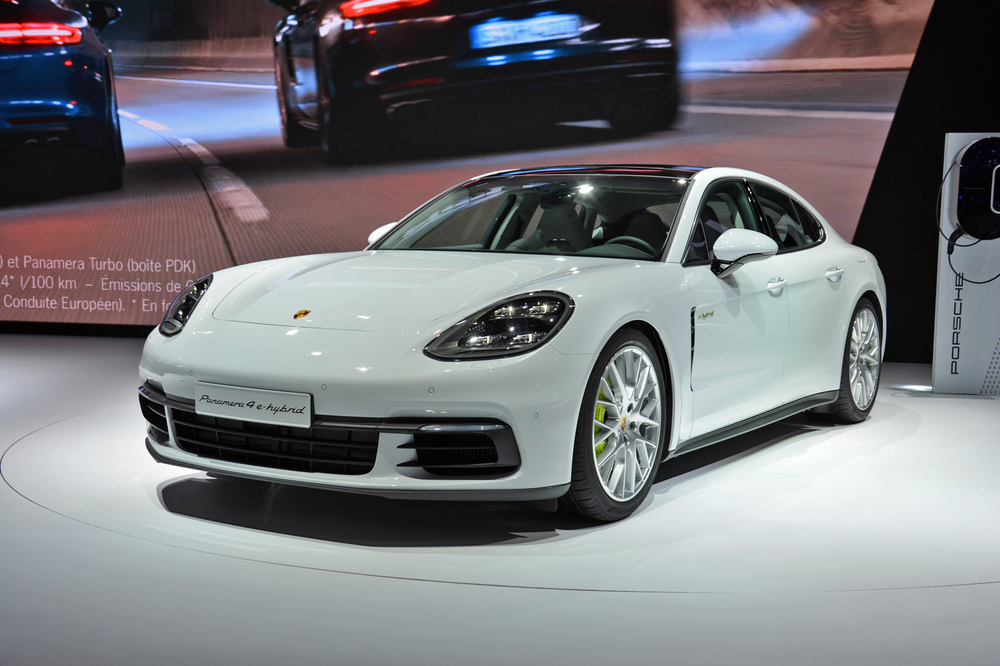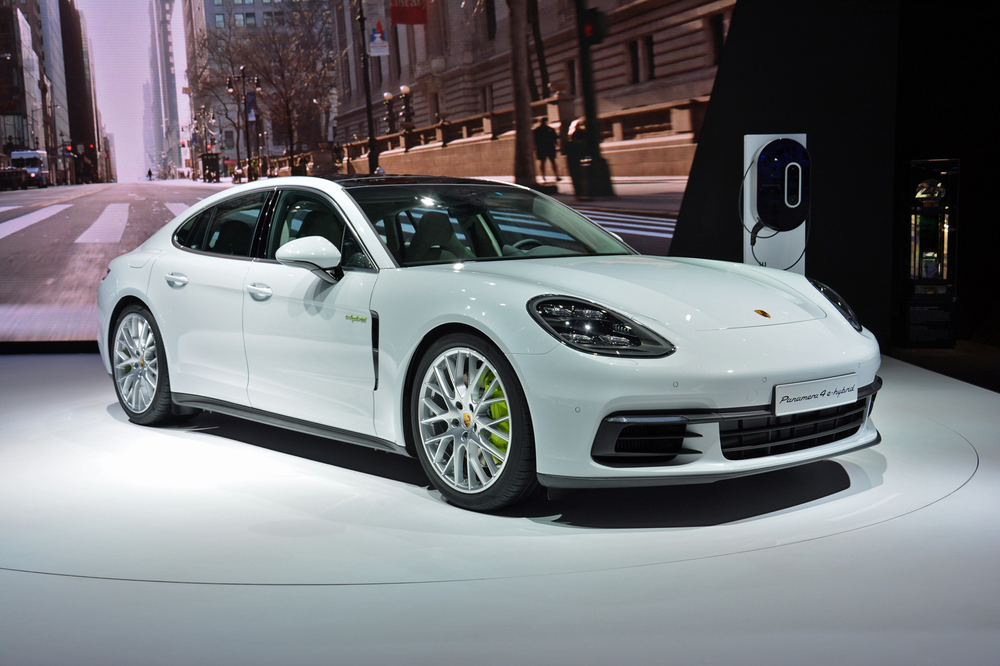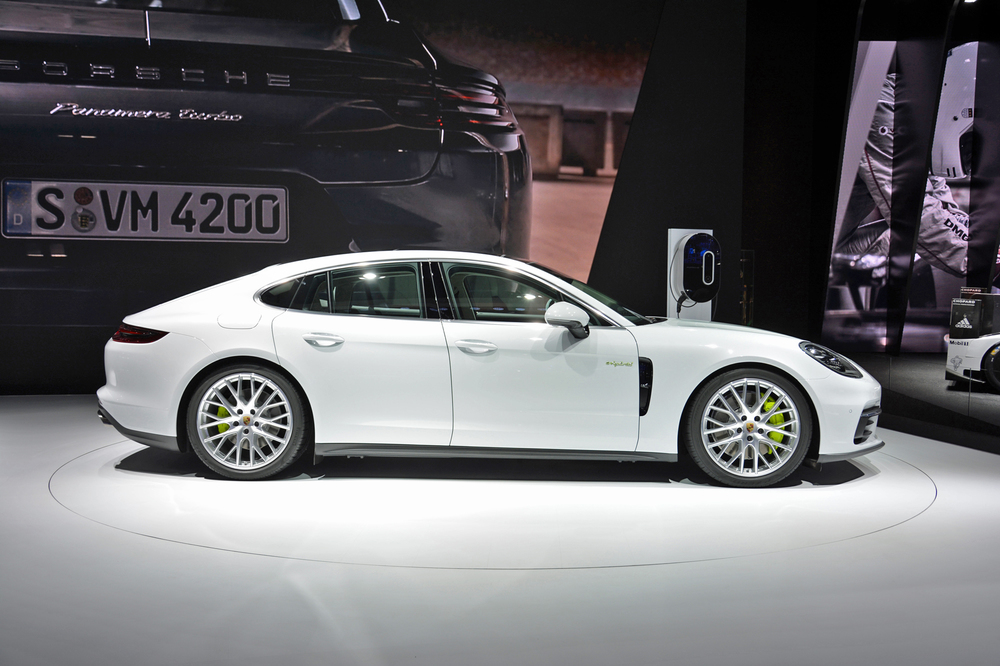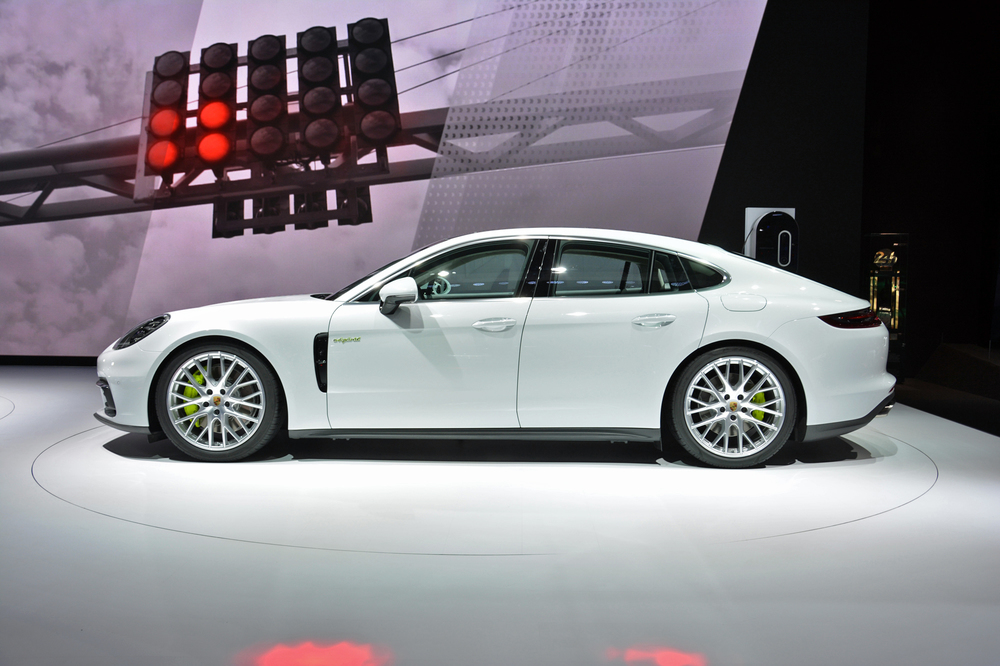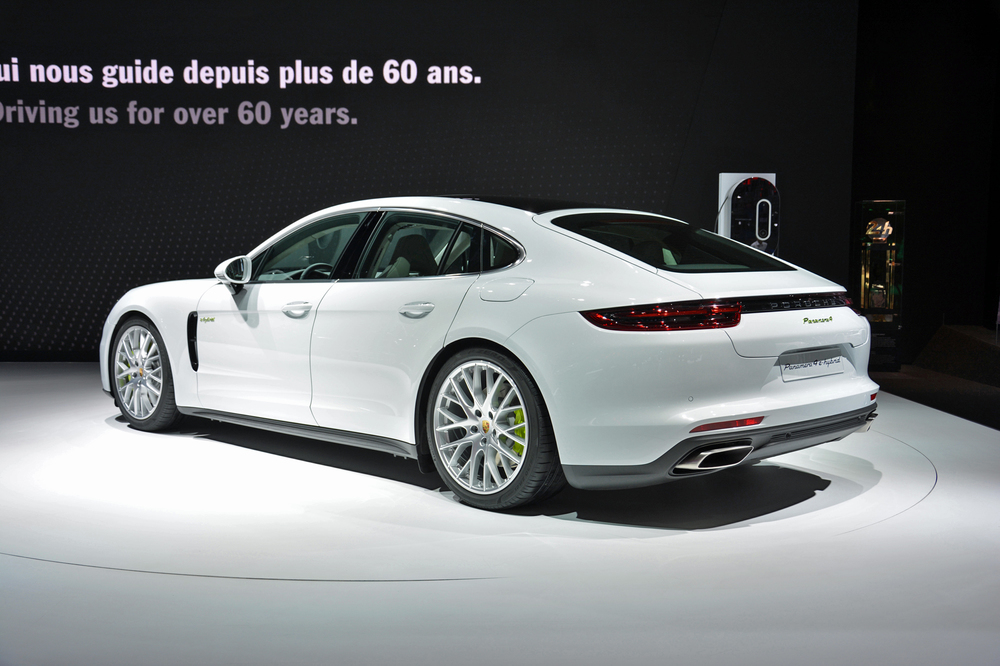Demonstrating its commitment to electrification, Porsche has expanded the second-generation Panamera lineup with a plug-in model dubbed 4 E-Hybrid.
The Panamera’s hybrid drivetrain is built around a twin-turbocharged 2.9-liter V6 engine. It works with an electric motor and a liquid-cooled 14.1kWh battery pack mounted below the trunk floor. Total output checks in at 462 horsepower and 516 pound-feet of torque, enough to send the Panamera from zero to 62 mph in 4.6 seconds and on to a top speed of 172 mph. An eight-speed dual-clutch automatic transmission channels the drivetrain’s output to all four wheels.
As with the sold-out 918 Spyder, the electric motor can work jointly with the internal combustion engine to delivery extra power at all times, as soon as the driver presses the accelerator pedal. Alternatively, the 4 E-Hybrid can drive on electricity alone for up to 30 miles at speeds of up to 86 mph.
Topping up the battery pack takes 5.8 hours when the Panamera is plugged into a European-spec, 230-volt outlet, but Porsche offers an optional quick charger that lowers the time to 3.6 hours. A purpose-designed smartphone application lets owners remotely start the charging process and turn on the A/C or the heater.
As further proof that hybrids aren’t appliances, the Panamera 4 E-Hybrid comes standard with Porsche’s vaunted Sport Chrono package. That means it boasts two built-in driving modes called Sport and Sport Plus, respectively. Additionally, four hybrid-specific modes dubbed E-Power, Hybrid Auto, E-Hold, and E-Charge are also available.
Porsche has fitted the Panamera 4 E-Hybrid with a model-specific instrument cluster that includes a power meter, another piece of tech inspired by the 918 Spyder. Visually, it receives discreet add-ons such as green emblems on both doors and on the trunk lid, and rectangular exhaust tips. It certainly doesn’t scream “I’m a hybrid!” To the uninitiated, the 4 E-hybrid looks just like a standard, gasoline-powered Panamera.
Read more: It’s official, Porsche’s iconic 911 is going hybrid
The 2017 Porsche Panamera 4 E-Hybrid is scheduled to go on sale across Europe in April, and it will arrive in the United States shortly after. Pricing information and fuel economy figures for the U.S.-spec model will be published closer to its on-sale date.
